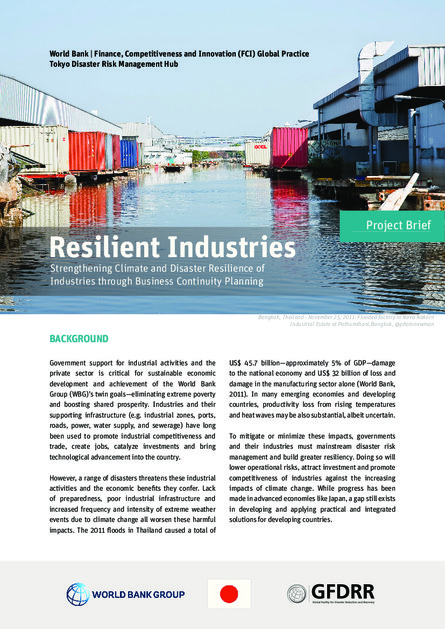
Government support for industrial activities and the private sector is critical for sustainable economic development and achievement of the World Bank Group (WBG)’s twin goals—eliminating extreme poverty and boosting shared prosperity. Industries and their supporting infrastructure (e.g. industrial zones, ports, roads, power, water supply, and sewerage) have long been used to promote industrial competitiveness and trade, create jobs, catalyze investments and bring technological advancement into the country.
However, a range of disasters threatens these industrial activities and the economic benefits they confer. Lack of preparedness, poor industrial infrastructure and increased frequency and intensity of extreme weather events due to climate change all worsen these harmful impacts. The 2011 floods in Thailand caused a total of US$ 45.7 billion—approximately 5% of GDP—damage to the national economy and US$ 32 billion of loss and damage in the manufacturing sector alone (World Bank, 2011). In many emerging economies and developing countries, productivity loss from rising temperatures and heat waves may be also substantial, albeit uncertain.
To mitigate or minimize these impacts, governments and their industries must mainstream disaster risk management and build greater resiliency. Doing so will lower operational risks, attract investment and promote competitiveness of industries against the increasing impacts of climate change. While progress has been made in advanced economies like Japan, a gap still exists in developing and applying practical and integrated solutions for developing countries.